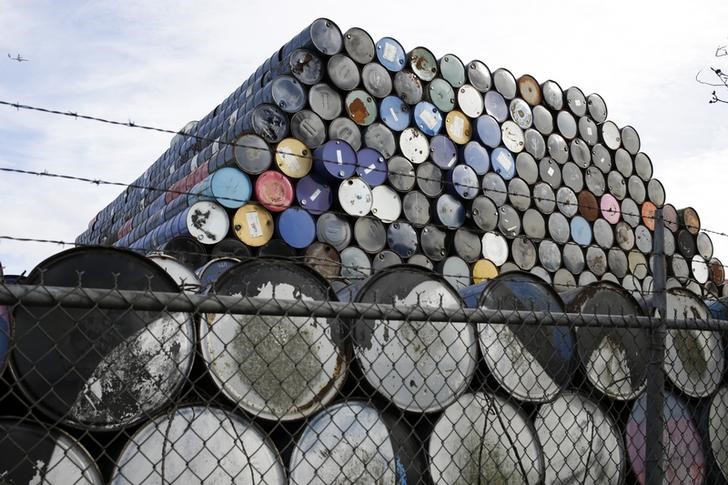Investing.com - West Texas Intermediate oil prices extended losses from the prior session on Tuesday to hit a two-week low as market players looked ahead to fresh weekly information on U.S. stockpiles of crude and refined products to gauge the strength of demand in the world’s largest oil consumer.
The American Petroleum Institute will release its inventories report later Tuesday, while Wednesday’s government report could show crude stockpiles fell by 0.5 million barrels in the week ended January 1.
Crude oil for delivery in February on the New York Mercantile Exchange shed 35 cents, or 0.95%, to trade at $36.41 a barrel as of 14:40 GMT, or 9:40AM ET. It earlier fell to $36.19, the lowest since December 22. Prices fell to a six-year trough of $34.29 on December 21.
On Monday, Nymex prices lost 28 cents, or 0.76%, in choppy volatile trade. Prices fell to a six-year trough of $34.29 on December 21.
Elsewhere, on the ICE Futures Exchange in London, Brent oil for February delivery dropped 45 cents, or 1.22%, to trade at $36.77 a barrel during U.S. morning hours.
A day earlier, London-traded Brent futures rose to $38.99, the most since December 15, before turning lower to end at $37.22, down 6 cents, or 0.16%, as ongoing concerns over a global supply glut outweighed geopolitical tension between Saudi Arabia and Iran.
Oil prices spiked more than 4% at one point on Monday, as investors reacted to a move by Saudi Arabia to cut commercial ties with Iran, fueling concerns over geopolitical instability in the Middle East. However, investors quickly discounted those fears, as no immediate threat was seen to global supplies.
Brent prices slumped to an 11-year low of $35.98 on December 22, as worries over the health of the global economy added to the concerns that a global supply glut may stick around for longer than anticipated.
Meanwhile, Brent's premium to the West Texas Intermediate crude contract stood at 36 cents, compared to a gap of 46 cents by close of trade on Monday.
Global crude production is outpacing demand following a boom in U.S. shale oil and after a decision by the Organization of the Petroleum Exporting Countries last year not to cut production in order to defend market share.
Oversupply issue will be exacerbated further once Iran returns to the global oil market early next year after western-imposed sanctions are lifted. Analysts say the country could quickly ramp up production by around 500,000 barrels, adding to the glut of oil that has sent prices tumbling.
